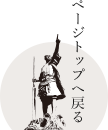Kanamaru's Entrance
Following the footsteps of the youth who received the mandate from heaven
Prefecturally Designated Historic Site
King Sho En Birth Home 'Mihosojo'
Sho En was born in a place called Shomi on Izena Island more than 600 years ago. The former site of the house where he was born is called Mihosojo, and is carefully maintained and preserved to this day. Three rocks have been placed on the ground, seemingly protected by the large Fukugi and Livistona trees on the site, and according to one theory, one of those rocks has Sho En's umbilical cord buried underneath it. Apparently the rock was placed there in order to prevent the domestic animals kept on the site from digging it up and eating it. Incidentally, "Mihoso" means "belly-button" in the local language.

Next to Mihosojo, the birthplace of Sho En, is a park called King Sho En Unaa Koen. It was built to commemorate 580 years since the birth of Sho En, and is a historical park decorated with beautiful green lawns and ponds brimming with water. The location has the name "Unaa," which means "garden," and evokes a sense of the elegance and refinement of a castle garden through which royalty would stroll. With its red-tile roof closely reminiscent of Shuri Castle, the administrative building also plays a role in creating a sense of the atmosphere of the Ryukyu Kingdom.

Inside the park stands a statue of Kanamaru (Sho En) made by an artist born in the village, Naka Bokunen. He is holding an oar in his right hand, and pointing in the direction of Kunigami with his left hand. The statue is a dynamic expression of the strong resolve Sho En had in his younger days when he left his island hometown, and touches the hearts of all who gaze upon it.
Village Designated Historic Site / Place of Scenic Beauty
Sunjagaa
The King Sho En Unaa Koen contains a well in the shape of a horse's hoof called Sunjagaa. According to legend, this is the site of Sho En's first bath when he was born, and it is also called "Ubugaa" in the local language. The well has been used for drinking water since olden times, so Sho En would have experienced his very first bath in its clear and pure water.
Village Designated Historic Site
Kai Miji (Source of Kai Mijibushi)
There is a famous local song on Izena Island called Kai Mijibushi. The song is connected to Sho En, and so this park was built on the land where the song originated in commemoration of the 600-year anniversary of Sho En's birth.
Words from the song are carved on a monument - they read:
Kai Mijino Yamaya Hitori Koete Shiranu
Nuiumato Kurato Nushito Sannin
The general meaning is "None know if one passes over the mountains of Kai Mijino Yamaya; all who know are these three: the horse ridden, the saddle and the rider."

During his time in Izena, Sho En lived in Shomi, on the eastern side of the island. However, he had a lover who lived in Jicchaku, which is close to the west coast. At the time, going from Shomi to Jicchaku involved traversing perilous routes covered in dense tree foliage. Riding home alone, Sho En would have looked back at the past from atop his horse, being painfully reluctant to leave his darling. That image is what the historical investigation of Izena-born historian Takara Kurayoshi and the sculpting of Naka Bokunen have reproduced, seemingly communicating the pain in the heart of the young man who would later become king.

Village Designated Historic Site
Sakata
The paddy field that caused his departure from the island is called Sakata, and can be seen to this day. The thin triangular shape surrounded by trees in the center of the photograph is the Sakata. Despite being located above paddy fields that dried up, it did not, and it is said that this is because the water flowed in the opposite direction, which is apparently how it got the name Sakata (roughly meaning "opposite-field"). In actual fact there was a small natural reservoir located above Sho En's paddy field, and water oozing out from there was what kept his field wet. Sho En farmed with a good understanding of irrigation, and thanks to that, the rice in his paddy fields ripened well. This affords a glimpse of the intelligence of the man who laid the cornerstone of the prosperity of the Ryukyu Kingdom.

On the monument at the entrance to Sakata are carved the feelings of the island maidens, whose hearts would become full of emotion just imagining the hard-working Sho En, who was the most handsome man on the island.


